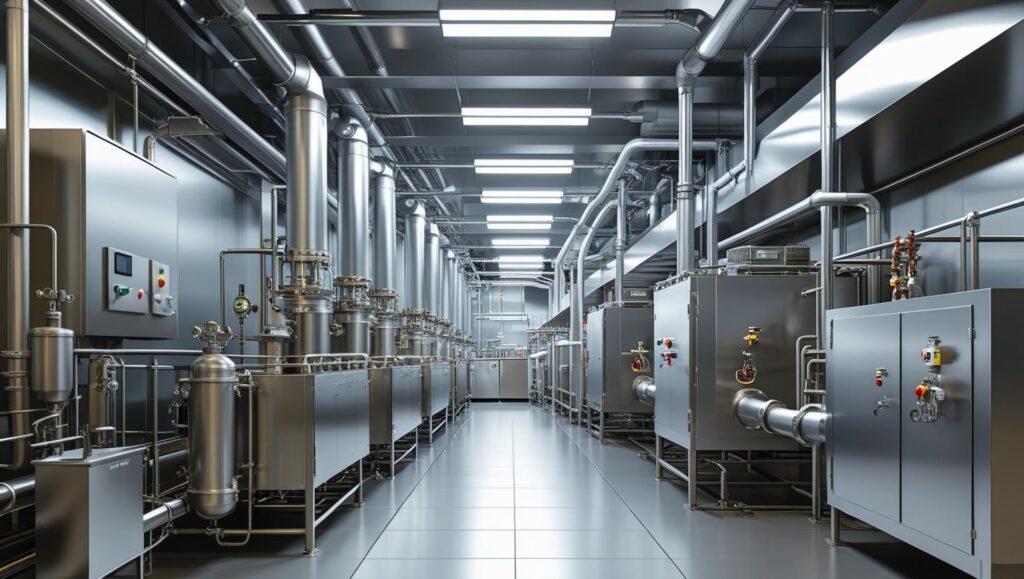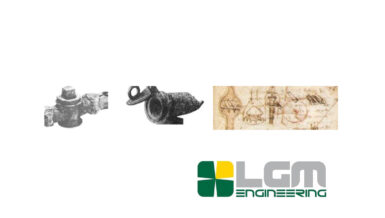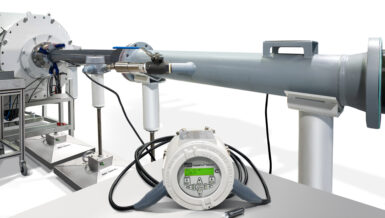This article by Tobi Akinrinmade (Process Industry Marketeer) explores:
- Why control moisture and humidity?
- Key parameters and technologies
- How-to solutions—best practices and equipment
- Product spotlight and comparisons
Why moisture & humidity control matters
A. Maintain product quality & performance
- Corrosion and contamination: In compressed air systems, every cubic meter at 7 bar contains ~184 g of water vapour, risking corrosion, lubricant emulsification, and microbial growth in food delivery systems.
- Industrial gases: High moisture can damage purification membranes in PSA generators or compromise trace gas quality for industrial gas production.
- Food, pharmaceuticals, electronics: RH fluctuations can lead to spoilage, inaccurate dosing, warped components, or poor packaging integrity.
B. Reduce operational cost
- Energy efficiency: Moisture sensors trigger dryers to operate only as needed, avoiding continuous energy draw and reducing dryer runtime.
- Reduced downtime: Proactive humidity control and maintenance scheduling minimize unexpected corrosion or freeze-ups.
C. Meet regulatory & safety requirements
Industries must comply with standards such as ISO 8573.1 for compressed air. It ensures controlled moisture to prevent microbial contamination or chemical degradation.
Key moisture & humidity parameters
A. Relative Humidity (RH)
The ratio of current vapour to saturation vapour capacity is temperature-dependent. RH sensors must measure temperature accurately to be valid.
B. Dew Point
The temperature at which vapour condenses. Dew point measurement (e.g., that of gases in pipework) prevents condensation and icing.
C. Absolute Moisture (ppm/V)
Useful for gas custody, process analysis, and exact load quantification—remains constant across pressure/temperature shifts.
The free PST Dew Point Calculator lets you convert humidity parameters.

Technologies for moisture & humidity control
A. Capacitive polymer RH sensors
- Small, cost-effective, reliable accuracy (~±1 2 % RH; temp ±0.1 °C).
- Quick response (< 15 s), digital communication (Modbus, I²C).
- Example: PST/Rotronic HygroClip probes (HC2-A) — ±1 % RH accuracy, stability < 1 %/year; recommended recalibration every 6–12 months.
B. Chilled-mirror hygrometers
- Gold standard: drift-free, highly accurate dew point; ideal for harsh or high-RH environments.
- More expensive, bulkier, but low maintenance in the long run.
- Example: PST chilled-mirror models have been used in labs and reference systems since the 1980s.
C. Tunable Diode Laser Absorption Spectroscopy (TDLAS)
- Advanced optical method: non-contact, ultra-low ppm detection (en.wikipedia.org).
- Example: Michell OptiPEAK TDL600 detects trace moisture in natural gas or petrochemical pipelines, rugged and fast.
D. Thermal, resistive & gravimetric hygrometers
- Less common: thermal (absolute humidity), resistive (salts/polymers), gravimetric (high-precision calibration).
How-to guide: implementing humidity/moisture control
Step 1: Define acceptable moisture range
- Do your process parameters demand dew-points below freezing?
- Is ±1 % RH enough? Or do you need trace-level moisture control?
Step 2: Choose the right sensor
- Tight budget/mobile use → polymer RH probes (Rotronic HygroClip HC2 A).
- High accuracy and drift-free are needed → chilled mirror hygrometer.
- Trace moisture in gas lines → TDLAS (Michell OptiPEAK TDL600).
Step 3: Optimize installation
- Avoid thermal fluctuations, vents or radiation sources in placement.
- Ensure temperature and pressure compensation in sensors.
- For pressure systems, apply dew-point at line pressure for accuracy.
Step 4: Integrate data control
- Use Modbus/analog outputs to feed moisture data into dryer PLCs for real-time control.
- Log, archive, and calibrate data for compliance and audit purposes.
Step 5: Maintain regularly
- Polymer sensors: annual recalibration (Rotronic HC2A, ∼<1 % drift/year).
- Chilled mirrors: longer intervals but still need upkeep.
- Standard Humidity probe: Rotronic HC2A-S,SH accurate and versatile probe for Temperatures -50…100 °C
Product spotlight & market comparisons
| Feature | Rotronic (HC2‑A) | PST Chilled-Mirror | E+E HTS801 | Michell OptiPEAK TDL600 |
| Accuracy | ±1 % RH, ±0.1 °C T | ±0.1 °C dew point | High RH with ARC | ±1 ppm |
| Drift | <1 %/year | Negligible | Minimal via ARC | Very low |
| Speed | Fast <15 s | Moderate | Moderate | Fast 2Secs |
| Size | Small, mid-cost | Bulky | Mid-large, expensive | 40…75 kg |
| Best for | Production, HVAC | Labs, calibration | Harsh environments | Gas pipelines, trace analysis |
- Rotronic HygroClip HC2 A: ideal for routine industrial control modular, digital, and stable.
- PST Chilled-Mirror hygrometer: This is essential for reference-grade dew point measurement in labs, dryer verification, or high-humidity lines.
- E+E HTS801: rugged, heated RH probe with ARC function, suitable for harsh, chemically aggressive gas environments; auto-calibration and probe swapping with rapidX modules.
- Michell OptiPEAK TDL600: Tunable Diode Laser Analyzer uses advanced laser absorption and signal processing to deliver high-performance, reliable moisture measurement in natural gas.
Adequate moisture and humidity control bring quality assurance, cost reduction, and industry regulatory compliance. The right sensor selection depends on application needs, environment, and precision requirements, whether budget polymer probes, reference-grade chilled mirrors, ruggedized heated probes, or advanced optical systems.
By following a structured implementation plan, setting control limits, choosing the right technology, installing wisely, integrating control logic, and maintaining calibration, you can reduce energy waste, minimize downtime, protect processes and equipment, and ensure reliable production.











